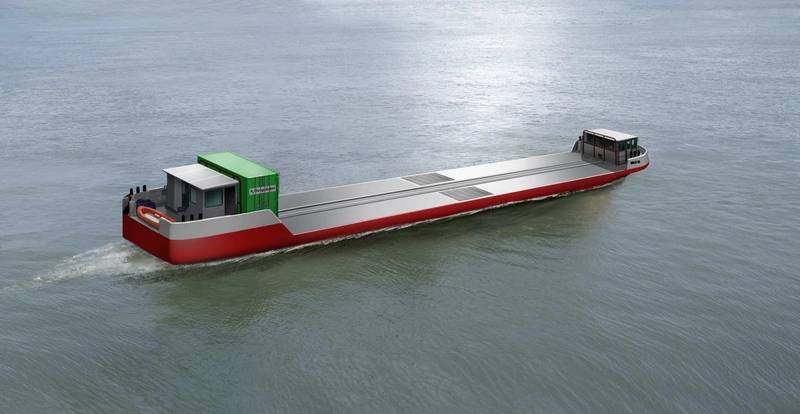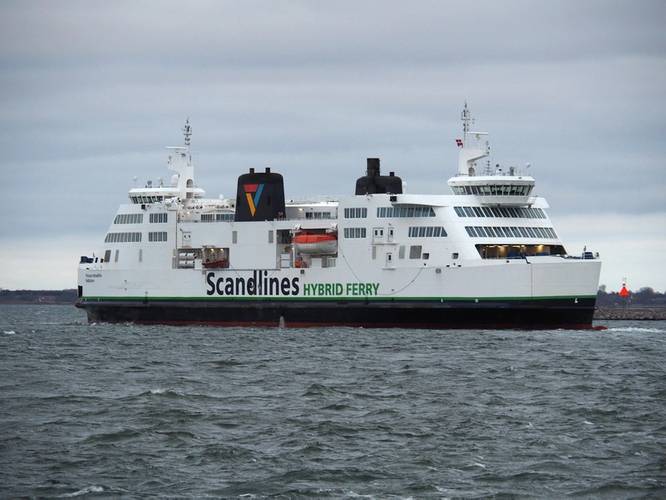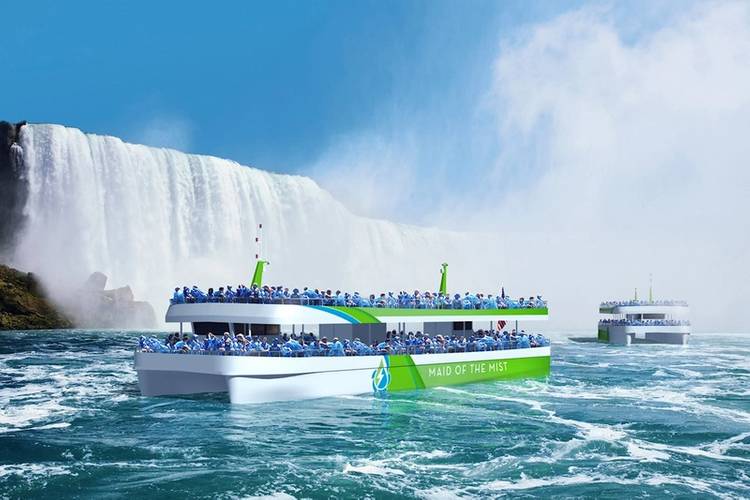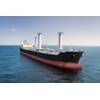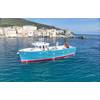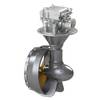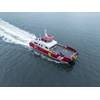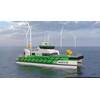The Shipping Industry Embraces Battery Power
The past decade has seen tight restrictions on emissions from vessels, notably with a 2015 move to a .10% sulfur maximum in Emission Control Areas (ECA) in North America and in northern Europe. As the International Maritime Organization (IMO) now shapes shipping’s decarbonization future, shipowners are looking at transitions away from fossil fuels. Among the myriad of alternatives are lithium ion batteries and some early forays into hydrogen fuel cells.
To date, large batteries are used on short runs, mainly as an auxiliary power source in conjunction with traditional fossil fuels, with benefits of load balancing, in a “hybrid” configuration, that is batteries in concert with conventional generators. DNV presents the case for batteries succinctly: “All electric and hybrid ships with energy storage in large Li-ion batteries can provide significant reductions in fuel cost, maintenance and emissions as well as improved responsiveness, regularity and safety.”
Batteries have figured in retrofits of existing offshore service vessels. Eidesvik Offshore, active in the North Sea oil and gas arena; has retrofitted multiple diesel electric vessels for battery power beginning in 2015. In the Americas, OSV operators installing battery retrofits have included Seacor, Companhia Brasileira de Offshore, and, more recently, Harvey Gulf Marine, fitting batteries into “tri-fuel” vessels fueled by conventional diesel and LNG.
The current boom in the maritime wind energy sector, where a decarbonization posture is de rigueur, has provided a further impetus for battery power in newbuilds. Louis Dreyfus Armateurs, with two Service Operations Vessels built in a Turkish yard, has deployed ABB’s Onboard DC Grid. ABB explains that this Electrical Supply System (ESS) “…will integrate two sets of batteries used primarily for spinning reserve and peak shaving. Power peaks during operation can be covered by the battery rather than starting another engine. Again, battery power can act as backup for running generators, reducing the need to run spare generator capacity.”
Batteries bring efficiency where the vessels must wait alongside turbines, as the battery power can substitute for inefficient low-rev generators.
Green credentials have also influenced power choices in the ferry sector, with companies’ environmental postures now a factor in riders’ modal choices, and, more broadly, in carriers’ funding sources. In a hybrid situation, one or more diesel powered generators are replaced by batteries, which would then run in port or for load balancing while underway. Ferry specialist naval architects Elliott Bay Design Group (EBDG) Principal, John Waterhouse, explains: “For vessels operating at sustained power on long trips, hybrid propulsion only makes sense if there are varying loads where the ESS can be used for peak shaving or as a spinning reserve.” Depending on the configuration, an inverter and step-up transformer would be linked in to bring battery power up to the equivalent voltage as a generator. Waterhouse, notes that: “High speeds or long distances make the use of an ESS less attractive because of the sheer size of the battery installation.”
Battery retrofits began in the ferry sector, during 2013 - 2016, with Scandlines (with runs between Denmark and Germany in the Baltic Sea ECA) outfitting six passenger ferries, including two with 1,300 passenger/ 460 vehicle, with lithium ion batteries. In 2019, one of these, Copenhagen, was fitted with a Norsepower Rotor Sail for the Gedser/Rostock route. In North America, Washington State Ferries (WSF) has embarked on a plan to electrify nearly all of its fleet, in line with its 2040 Long Range Plan (LRP), “…which calls for fleet stabilization by delivering 16 new vessels to replace aging vessels and retrofitting six existing vessels,” according to WSF’s Jan. 2021 System Electrification Plan. WSF has announced plans to converts its three largest ferries, the Jumbo Mark II class, from diesel to a 10.4 MWH hybrid-electric, with system upgrades to be provided by Siemens (which had assisted Scandlines earlier).
Waterhouse notes that EBDG is leading the engineering on the WSF project at Vigor Shipyard.
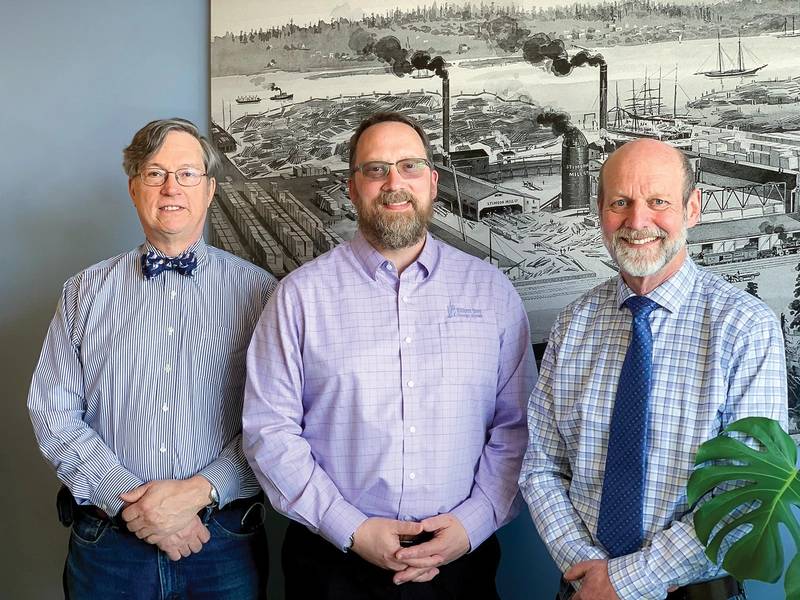 “For vessels operating at sustained power on long trips, hybrid propulsion only makes sense if there are varying loads where the ESS can be used for peak shaving or as a spinning reserve," said John Waterhouse, Principle, EBDG, far left, with his EBDG team. Photo courtesy EBDG
“For vessels operating at sustained power on long trips, hybrid propulsion only makes sense if there are varying loads where the ESS can be used for peak shaving or as a spinning reserve," said John Waterhouse, Principle, EBDG, far left, with his EBDG team. Photo courtesy EBDG
BC Ferries, serving ports further north, has seen Island Discovery and Island Aurora, the first two of six Island Class hybrids (up to 400 passengers/47 vehicles), constructed at Damen Galati, Romania, enter service in 2020. Four additional newbuilds will be delivered to the Point Hope Maritime yard in Victoria, British Columbia later in 2021 for final preparation work, with the plan to enter service in 2022.
The battery packs (2 @ 400 kWh) are supplied by Corvus Energy, based in Norway but with a BC office.
With quick port turnaround times in populated areas, ferry projects include charging “arms” – autonomous in some cases – that can rapidly hook up to shoreside charging stations. In the case of WSF, shoreside battery charging will offer estimated reductions of 53% greenhouse gas emissions (CO2e) by 2030, and 76% by 2040, compared to a 2005 baseline. EDDG’s Waterhouse said “An operation such as the Bridgeport – Port Jefferson ferry might not use an ESS to supplement the propulsion but could use it in port for the hotel loads, allowing zero emissions when docked.”
ABB, which worked with Louis Dreyfus Armateurs with its SOVs, has also been active in the passenger sector.
Most recently, ABB Marine & Ports announced that it would supply Casco Bay Lines (Portland, Maine) with an integrated hybrid-electric power and propulsion package, as well as a shoreside charging apparatus, for a new 599-passenger ferry. Serving the 2.2 nm run to Peaks Island across the Casco Bay, the new vessel would enable carbon emissions from diesel fuel to be eliminated while tied up in port. With ABB’s Onboard DC Grid power distribution system, fuel consumption can be optimized for varying loads. In a presentation to the community, CBL said that it had chosen 900kWh hybrid configuration (one of the four choices provided by EBDG, a consultant on the project). The presentation also reveals that the hybrid vessel, with a capital cost of $13.97 million, was $3.7 million more expensive than a diesel-powered vessel, otherwise the same. In April, 2021, ABB announced that it had been tapped to supply power solutions for 10 hybrids to be built for Portuguese operator Transtejo, for fast ferry routes on the Tagus River around Lisbon.
ABB solutions have also been deployed in Niagara Falls, where Maid of the Mist boats carry tourists around the Falls; the 2020 season saw two new all electric boats joining its fleet. “The latest generation Maid of the Mist vessels are welded aluminum catamarans with batteries powering twin electric propulsion motors capable of a total 400 kW output,” according to ABB. An onshore charging system complements the ESS afloat.
Fully battery powered vessels are already here, albeit working short runs. In 2015 Ampere, with capacity for the 350 passengers and 120 cars, began operations on Norway’s Sognefjord connecting Oppedal and Lavik, a 5.5 km run. With Siemens as integrator, the 1090kWh battery pack (with DC bus voltage of 850 – 1050) can be charged in under 10 minutes. In Denmark, Ellen, 198 pax/31 cars, connects Fynshav and Søby on a 22 mile run in a protected area in the southern Baltic Sea. Fitted with two motors and a 4.3 MWh battery pack from Leclanché SA, it began service during the summer of 2019. In Canada, BC Ferries has an intention for a future conversion of its Island Class hybrids to full electric operation in the future. In Norway, the fully electric 120 TEU container feeder Yara Birkeland (which is being readied for autonomous operation) is expected to enter service later this year on the Oslofjord, for fertilizer producer Yara Corporation.
An important demonstration project is a fully battery powered bunker tanker designed by e5 Lab Inc., a consortium of seven leading Japanese companies, including Asahi Tanker Co., Ltd. and (with others including Mitsui OSK), which hopes to develop an infrastructure for fully electric vessels. The vessels which will service Tokyo Bay, will be built by Koa Sangyou Ltd.(2022 delivery) and Imura Shipyard Co. Ltd. (2023 delivery).
The vessels will be highly maneuverable, with rotating azimuth propellers at the stern (powered by an electric motor), and a bow thruster for moving transversely alongside for bunkering operations.
In late 2020, the consortium chose Kawasaki Heavy Industries (KHI) to build the ship’s propulsion system. In March 2021, Corvus Energy (which also supplied the ESS on Ampere) was chosen to provide the ESS for the e5 vessels. Corvus, which will integrate its 3,480 kWh Orca ESS into the tankers; KHI says that battery operations between charges should be six to eight hours.
Looking ahead: Hydrogen
Forward thinkers are already tackling the infrastructure for distributing hydrogen to the maritime sector. The listed tanker company Ardmore Shipping (ASC), active in moving petroleum products and chemicals (including methanol), announced that it was working to team up with Element 1 (E1), developers of a technology that enables production of hydrogen from methanol, on demand at the point of consumption. As contemplated under a broad mandate to supply the maritime sector, the E1 system could bring hydrogen to fuel cells at docks.
Corvus Energy is thinking along similar lines, with a late 2020 announcement that it was partnering with Toyota, to bring its fuel cell technology to the maritime sector, with plans to develop and produce Proton Exchange Membrane (PEM) fuel cell systems for the global maritime industry. With a production plant in Bergen, Norway, it plans to offer fuel cells based on a technology developed by Toyota for automobiles, starting in 2023. The project has received $6.25m in funding from Innovation Norway, a State agency. Corvus is thinking about a robust long-term strategy, saying: “Furthermore, a specific marine control system uniting the battery and fuel cell operation will be developed for easy integration with power management systems from a range of system integrators.” EBDG’s Waterhouse said “…the efficiency of PEM conversions is over 50% (energy output/energy content of hydrogen) so it’s better than an internal combustion engine.” He told Maritime Reporter that “Most marine applications need to be in the several MW range. These will likely be based on designs for railroad engines since the railroad market is much larger than the marine market.”
Another set of projects is underway in Europe, under the auspices of the E.U. funded Flagships project, a consortium of shipowners, equipment suppliers and service providers seeking to bring hydrogen fueling to marine carriers. One project member, the French inland shipowner Compagnie Fluvial de Transport (CFT), a subsidiary of the Sogestran Group, is set to deploy a hydrogen fueled vessel on the River Seine later in 2021, as part of a new business for urban distribution with transport vessels in the Paris area. Onboard fuel cells will be supplied with compressed hydrogen in cylinders. The consortium is also building a passenger/car ferry at the Ada Shipyard, in Istanbul, to be deployed by the Norwegian owner Norled along the coast near Stavanger.
The Ardmore Shipping hydrogen fuels distribution mandate is worldwide, but it points towards the U.S. Providing a hint of a market with likely high uptake, if the deal moves ahead, Ardmore and E1 would be bringing in Maritime Partners, a financier which has penetrated heavily in to the U.S. inland waterway markets, having financed hundreds of barges for the inland river system.
Smart money with a maritime bent is looking closely at batteries and fuel cells, in conjunction with funding from government. The SW/TCH team (tied to investor Oaktree, and to Clean Marine Energy - backers of early LNG fuel barging efforts) has developed a concept for an all electric ferry around New York’s waterways, and is participating in the Golden Gate Zero Emission Marine project, where the ferry Water-Go-Round with construction underway at All American Marine, to be powered by hydrogen fuel cells, is set for a 2021 launch.
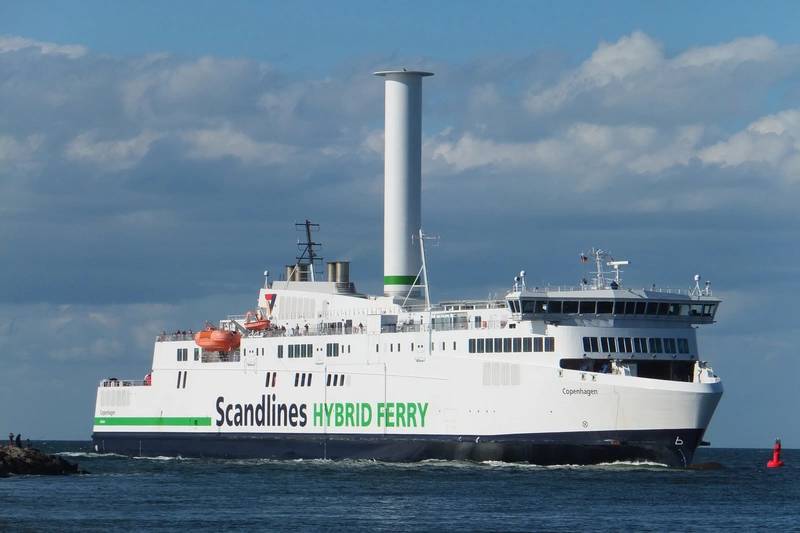 Photo courtesy Scandlines / Horst Dieter Foerster
Photo courtesy Scandlines / Horst Dieter Foerster






